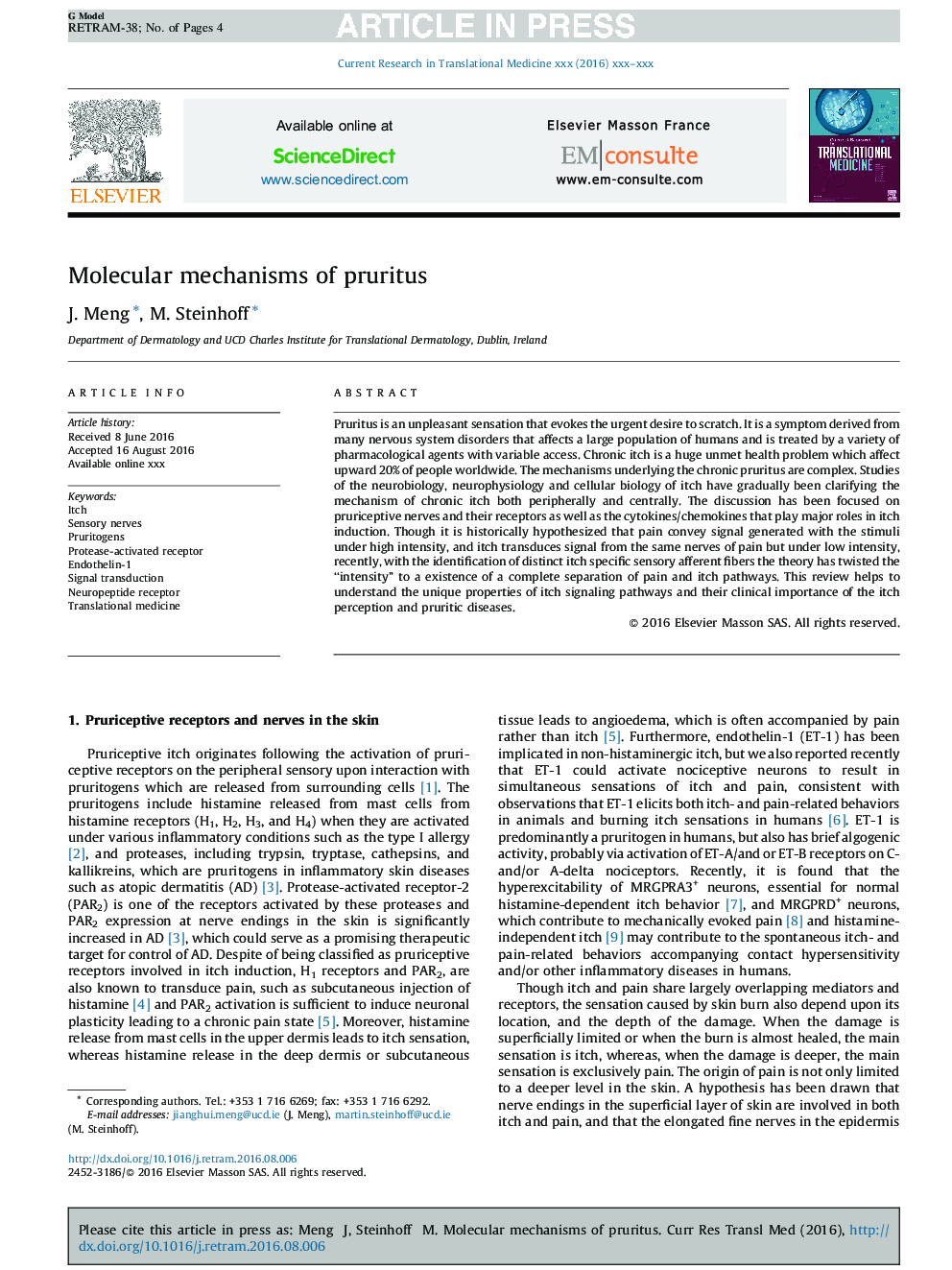| Article ID | Journal | Published Year | Pages | File Type |
|---|---|---|---|---|
| 5715955 | Current Research in Translational Medicine | 2016 | 4 Pages |
Abstract
Pruritus is an unpleasant sensation that evokes the urgent desire to scratch. It is a symptom derived from many nervous system disorders that affects a large population of humans and is treated by a variety of pharmacological agents with variable access. Chronic itch is a huge unmet health problem which affect upward 20% of people worldwide. The mechanisms underlying the chronic pruritus are complex. Studies of the neurobiology, neurophysiology and cellular biology of itch have gradually been clarifying the mechanism of chronic itch both peripherally and centrally. The discussion has been focused on pruriceptive nerves and their receptors as well as the cytokines/chemokines that play major roles in itch induction. Though it is historically hypothesized that pain convey signal generated with the stimuli under high intensity, and itch transduces signal from the same nerves of pain but under low intensity, recently, with the identification of distinct itch specific sensory afferent fibers the theory has twisted the “intensity” to a existence of a complete separation of pain and itch pathways. This review helps to understand the unique properties of itch signaling pathways and their clinical importance of the itch perception and pruritic diseases.
Keywords
Related Topics
Health Sciences
Medicine and Dentistry
Pathology and Medical Technology
Authors
J. Meng, M. Steinhoff,
